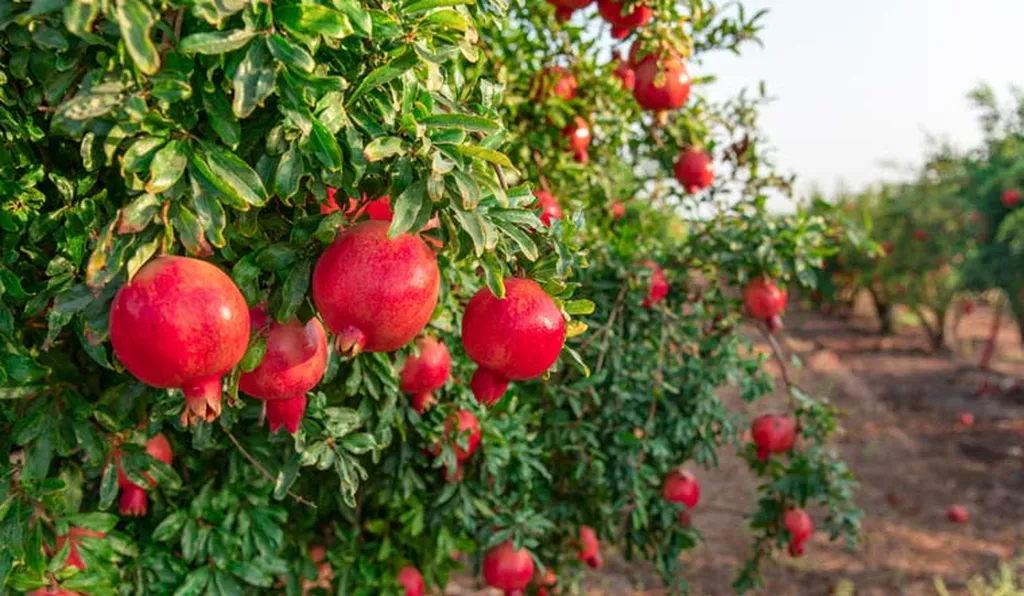In the heart of India, researchers are unlocking the genetic secrets of the pomegranate, a fruit celebrated for its health benefits and culinary versatility. Kshitija Kadam, a scientist at Lokmangal College of Agricultural Biotechnology in Solapur, has led a groundbreaking study that could revolutionize the way we identify and cultivate this ancient fruit. The research, published in the journal ‘Растениевъдни науки’ (translated to English as ‘Plant Sciences’), delves into the genetic diversity of indigenous pomegranate varieties, offering insights that could reshape the agricultural landscape.
Pomegranates have been cherished for centuries, not just for their taste but also for their nutraceutical and medicinal properties. However, the dynamic nature of environmental factors and the increasing number of varieties have made it challenging to identify and distinguish between different pomegranate cultivars based solely on physical traits. This is where Kadam’s research comes into play. By employing stable molecular markers, specifically Simple Sequence Repeats (SSRs), the study provides a robust method for precise morphological characterization and understanding the molecular variability in pomegranate varieties.
The team screened 40 SSR markers and identified 24 polymorphic ones, which were then used to analyze 13 different pomegranate varieties. The Polymorphism Information Content (PIC) value, a measure of the effectiveness of a genetic marker in detecting polymorphisms, ranged from 0.13 to 0.37, with a mean of 0.25. The heterozygosity percent, indicating the proportion of heterozygous individuals in a population, ranged from 0.14% to 0.50%, with a mean of 0.35%. The highest PIC value and heterozygosity were observed in the PgSSR78 marker, highlighting its potential for future research.
The similarity coefficient matrix revealed the genetic distance between the varieties, ranging from 0.58 to 0.99. The maximum similarity was observed between the Alah and Khandari varieties, while the minimum similarity was found between IC318743 and 1185, followed by Maha and 1185. “This genetic distance analysis is crucial for understanding the genetic relationships among different pomegranate varieties,” Kadam explains. “It helps in developing varietal DNA fingerprints, identifying true-to-type genotypes, and avoiding duplication, which are essential for maintaining genetic diversity and improving crop quality.”
The study identified several SSR markers with high PIC values and heterozygosity, including PgSSR16, PgSSR23, PgSSR49, PgSSR60, PgSSR32, PgSSR40, and PgSSR78. These markers could be invaluable for pomegranate cultivar identification, offering a reliable tool for breeders and researchers. “Microsatellite markers have proven to be very useful for developing varietal identification markers at an early growth stage due to their high polymorphism, abundance, multi-allelic, and co-dominant inheritance,” Kadam notes.
The implications of this research extend beyond the agricultural sector. As the demand for pomegranate and its derivatives continues to grow, the ability to accurately identify and cultivate specific varieties becomes increasingly important. This study provides a solid foundation for future developments in pomegranate breeding, ensuring the preservation of genetic diversity and the improvement of crop quality. By understanding the genetic makeup of pomegranate varieties, researchers can develop strategies to enhance yield, disease resistance, and nutritional value, ultimately benefiting consumers and the agricultural industry alike.
Kadam’s research, published in ‘Растениевъдни науки’, represents a significant step forward in the field of agricultural biotechnology. As we continue to explore the genetic diversity of our crops, we unlock the potential for innovation and improvement, paving the way for a more sustainable and productive future.

